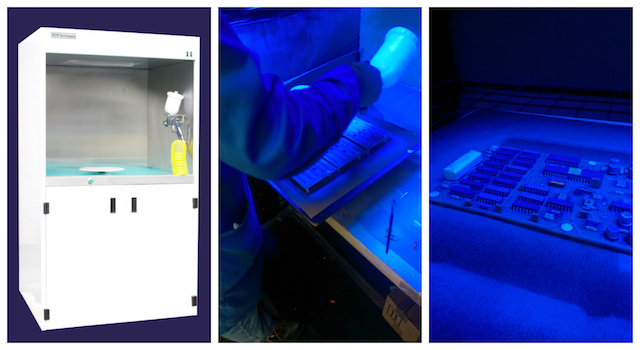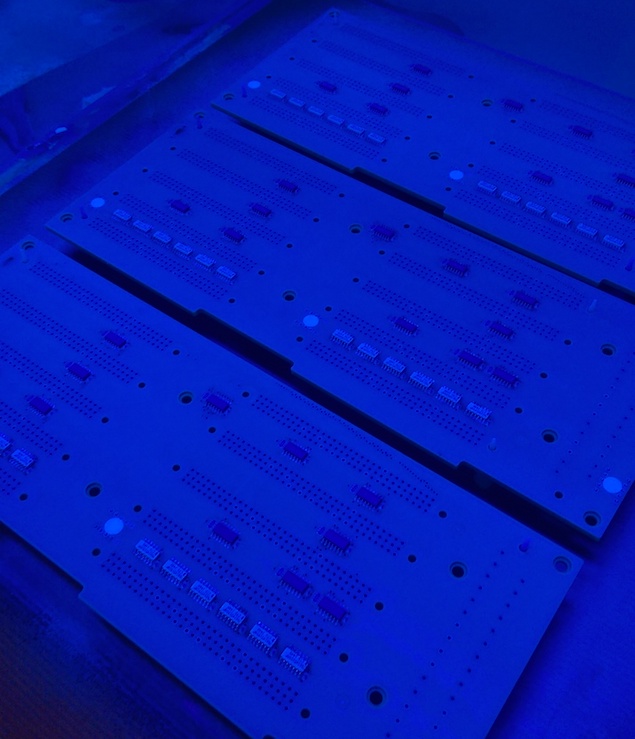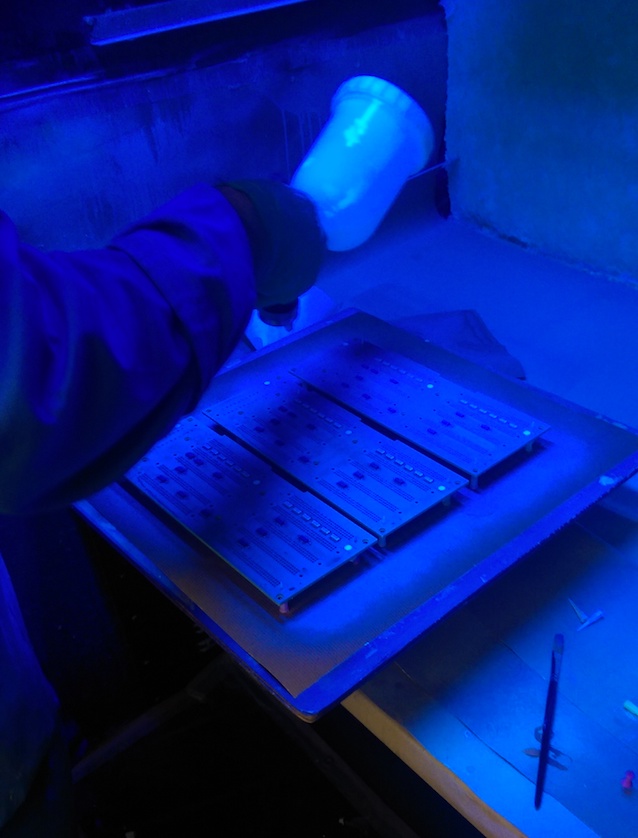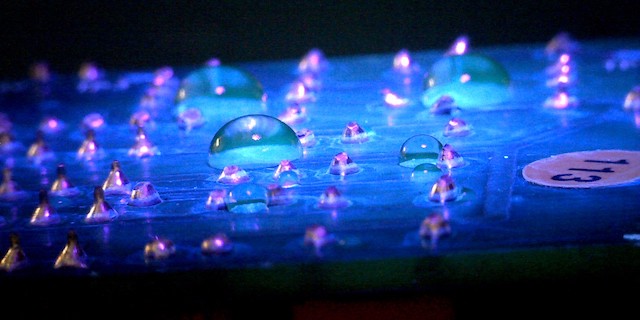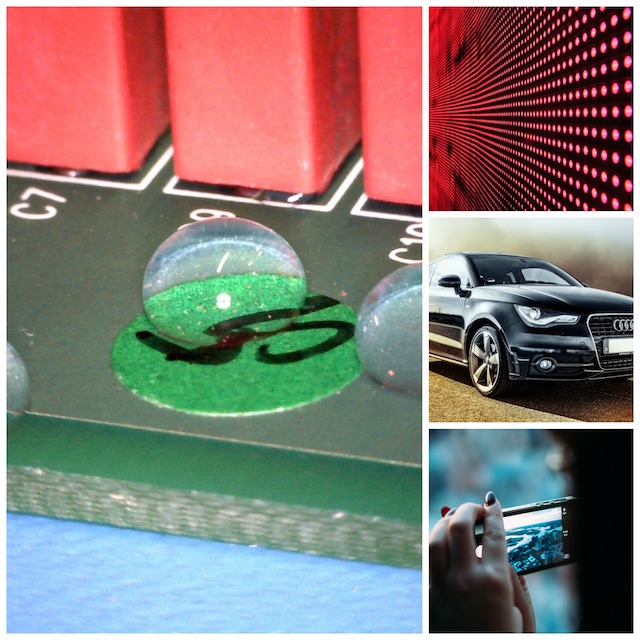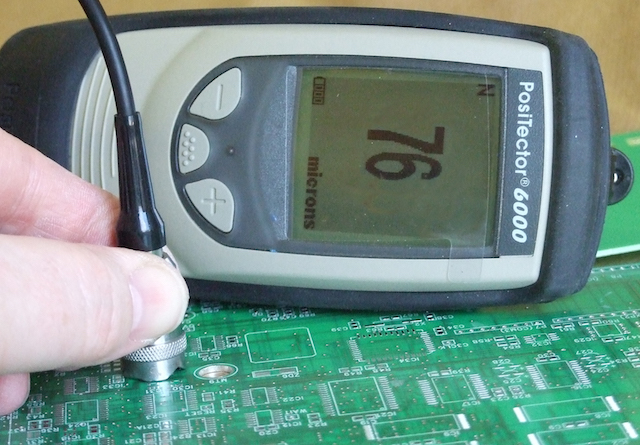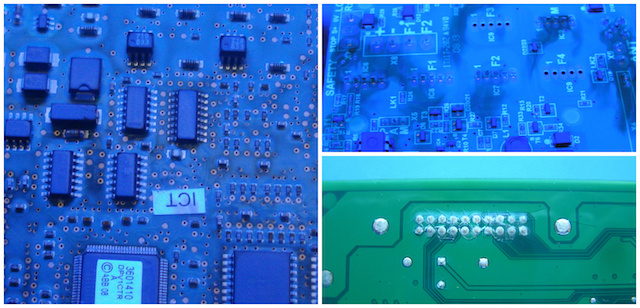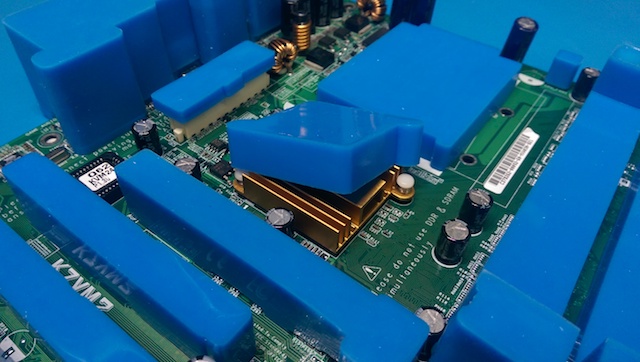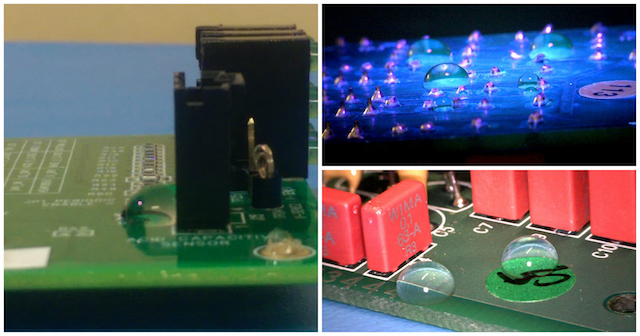
There are several reasons for using a conformal coating or Parylene to protect a printed circuit board (PCB).
They include:
- High insulation protection
- High moisture and humidity protection
- Chemical and temperature resistance
- Ruggedisation
- Improve dielectric properties
- Barrier protection against particulates
However, one property that most liquid conformal coatings do not possess that is extremely useful to have is being water repellent or hydrophobic.
A coating that is hydrophobic repels water from the surface by changing the surface energy of the coating.
This makes it energetically unfavourable for the water to wet the surface. Hence, the water “balls up” and rolls off the surface.
This occurs in the fluorinated nano-coatings that are hydrophobic and is an extremely useful property when protecting a circuit board where water may be present.
However, typical conformal coatings are not hydrophobic.
Materials like acrylics and polyurethane coatings are excellent against moisture but not so good as water repellent materials. They do not have a low surface energy.
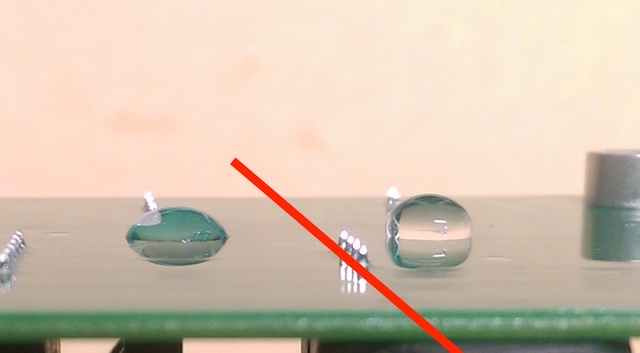
A hydrophobic acrylic conformal coating – the best of both coatings
Now, there exists a hybrid acrylic coating that has both the properties of an acrylic conformal coating at the same thickness plus the benefits of a hydrophobic nano-coating.
These benefits include:
- Hydrophobic (water repellent) surface
- High Insulation protection
- High moisture and humidity protection
- Ruggedisation
- Improved dielectric properties
- Barrier protection against particulates
This new range of conformal coatings can now offer the best properties of both without any cost penalty.
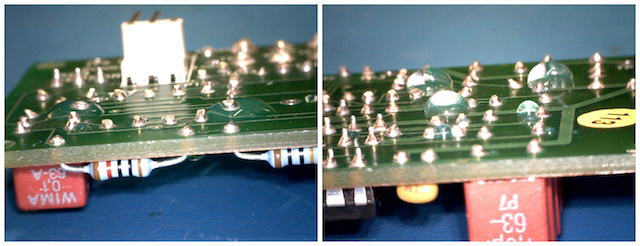
Find out how we can help you with your acrylic hydrophobic coatings now.
Contact us to discuss your needs and let us explain how our hydrophobic coatings could work for you.
Contact us now.
